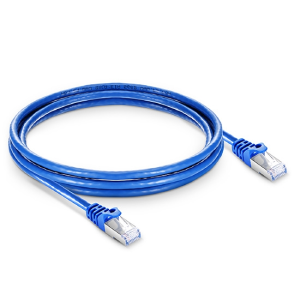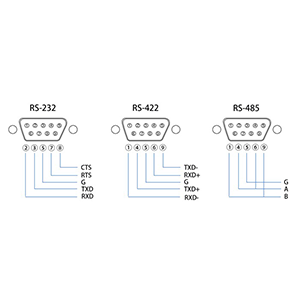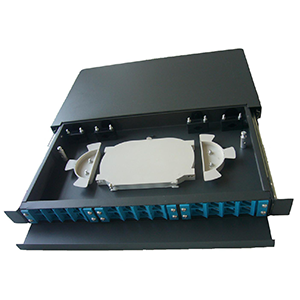GPON (Gigabit Ethernet Passive Optical Network) is one of the important technologies in the field of fiber-optic broadband access. This article will explore the relevant knowledge of GPON SFP (Small Form Factor Pluggable) modules. We will first briefly introduce the basic architecture and characteristics of GPON networks and explain its advantages in fiber-optic access. Next, we will define the application of SFP modules in optical networks and explain the role of GPON SFP modules in GPON networks.
Then, we will focus on the main features of GPON SFP modules, including physical interfaces, transmission capabilities, compatibility, power consumption and heat dissipation, security, as well as cost and reliability. We will analyze the impact of these features on GPON network applications. Finally, we will introduce the typical deployment scenarios of GPON SFP modules in different networks and analyze its advantages in various application scenarios.
GPON Network Overview
GPON Network Basic Architecture and Characteristics:
GPON (Gigabit-capable Passive Optical Network) is a gigabit-class passive optical network technology based on the ITU-T G.984 standard. Its basic architecture includes:
(1) OLT (Optical Line Terminal): Located at the service provider end, providing network interface and service management functions.
(2) ODN (Optical Distribution Network): A network segment composed of passive optical transmission equipment such as optical fiber and optical splitter.
(3) ONT (Optical Network Terminal): Located at the user end, realizing photoelectric conversion and Ethernet interface.
GPON adopts a point-to-multipoint tree topology and uses time division multiplexing (TDM) technology to achieve upstream and downstream data transmission. OLT provides access services to multiple ONTs through ODN, sharing the same optical fiber resources.
GPON’s main technical features include: high bandwidth, long transmission distance, dynamic bandwidth allocation, reliability protection, etc. These features enable GPON to meet various requirements of current optical fiber access networks.
Advantages of GPON network in fiber access:
(1) Ultra-high access bandwidth:
- GPON supports up to 2.5Gbps downstream and 1.25Gbps upstream bandwidth.
- It can fully meet the needs of families and enterprises for bandwidth-intensive services such as high-definition video and large file transmission.
(2) Long-distance transmission capability:
- GPON’s passive optical transmission network can support a maximum transmission distance of 20km.
- It greatly reduces the cost of network deployment and is suitable for coverage needs in remote areas.
(3) High reliability and security:
- GPON supports reliability protection mechanisms such as 1+1 fiber redundancy backup.
- The use of tunnel technology, identity authentication and other security mechanisms improves business security.
(4) Flexible bandwidth scheduling:
- GPON uses dynamic bandwidth allocation (DBA) technology to achieve flexible bandwidth scheduling.
- It can optimize bandwidth allocation according to user needs and business conditions, improving resource utilization.
(5) Economic advantages:
- GPON adopts a passive optical network architecture with low equipment cost and energy consumption.
- By sharing optical fiber resources, the cost of line laying is also greatly reduced.
In short, GPON has become one of the mainstream technologies for current optical fiber access networks with its ultra-high bandwidth, long-distance transmission, and high reliability, and is widely used in various user scenarios such as homes and enterprises.
Definition and function of GPON SFP module
Application of SFP module in optical network:
SFP (Small Form-factor Pluggable) is a small pluggable photoelectric conversion module, which is widely used in various optical network equipment. SFP module contains optical transceiver chip, photoelectric conversion device, etc., which can realize photoelectric conversion and signal processing functions.
The main advantages of SFP module include: small size, low heat consumption, low cost, easy maintenance, etc. Thanks to these characteristics, SFP module has been widely used in optical network equipment such as Ethernet switches, routers, GPON equipment, etc.
The role of GPON SFP module in GPON network:
In GPON (Gigabit-capable Passive Optical Network) network, SFP module is mainly used in GPON equipment, such as OLT (optical line terminal) and ONT (optical network terminal). The specific functions are as follows:
(1) OLT-side SFP module:
- Integrated in the OLT device to realize the optical-electrical interface between the OLT and the optical fiber network.
- Provide up to 2.5Gbps downstream and 1.25Gbps upstream transmission rate.
- Support ITU-T G.984 standard and compatible with GPON network technical requirements.
(2) ONT-side SFP module:
- Integrated in the ONT device as the optical-electrical interface module on the user side.
- Works with the OLT-side SFP module to jointly build the upstream and downstream transmission of the GPON network.
- Supports standard Ethernet interface to facilitate optical fiber access to user equipment.
Through the application of GPON SFP modules, GPON devices can seamlessly connect with optical fiber networks to achieve high-bandwidth, long-distance optical fiber access services. The miniaturization and standardization of SFP modules also greatly simplify the deployment and maintenance of GPON networks. In short, GPON SFP modules play a key role in photoelectric conversion and signal processing in GPON networks, providing users with high-speed and reliable optical fiber access experience.
Main features of GPON SFP modules
The main features of GPON SFP modules include support for gigabit optical fiber transmission, integrated optical transceiver functions, and miniaturized design, which is suitable for integrating GPON functions into switches or routers. It has high compatibility, low power consumption, and long-distance transmission capabilities, and is commonly used in telecommunications and enterprise-level optical fiber access networks.
Physical interface:
- Common optical fiber interfaces of GPON SFP modules include LC, SC, FC, etc.
- Different fiber interface types will affect the compatibility and wiring convenience of network equipment.
Transmission capacity:
- GPON SFP module supports up to 2.5Gbps downstream and 1.25Gbps upstream bandwidth.
- The ultra-high transmission rate can meet the needs of families and enterprises for applications such as high-definition video and large file transmission.
Compatibility:
- GPON SFP module is fully compatible with ITU-T G.984 standard and highly compatible with GPON network equipment.
- Good compatibility helps smooth network upgrades and seamless docking of new and old equipment.
Power consumption and heat dissipation:
- GPON SFP modules adopt low power consumption design, low energy consumption, which is conducive to reducing equipment operating costs.
- The compact appearance and optimized heat dissipation design also greatly reduce the space and heat dissipation requirements during deployment.
Security:
- GPON SFP modules have security protection mechanisms such as optical power monitoring and identity authentication.
- These security features can effectively prevent illegal access and protect user privacy and business security.
Cost and reliability:
- The procurement cost of GPON SFP modules is relatively low, which is conducive to reducing the overall network construction cost.
- Modular design and strict quality control ensure the high reliability and long life of GPON SFP.
In general, GPON SFP modules are an excellent choice for GPON network equipment due to their excellent performance, excellent compatibility, and low power design. These features can not only improve the overall performance of the network, but also reduce deployment and operating costs, ensuring the safe and reliable operation of the network.
Typical application scenarios of GPON SFP modules
Typical application scenarios of GPON SFP modules include fiber-to-the-home (FTTH) deployment by telecom operators, gigabit fiber access for enterprise networks, and high-bandwidth demand environments in campuses or business parks. It expands GPON network functions by inserting switches or routers to achieve flexible fiber access solutions.
Home broadband access:
- GPON SFP modules can be integrated in ONT devices to provide home users with access bandwidth of up to 2.5Gbps.
- The ultra-high transmission rate can meet the needs of families for high-definition video and large file transmission.
- The small size and low power consumption are also conducive to the home deployment of ONT devices.
Small and medium-sized enterprise access:
- GPON SFP modules can be integrated in enterprise gateways, switches and other devices to achieve fiber access between enterprises and GPON networks.
- The 1.25Gbps upstream bandwidth can meet the needs of small and medium-sized enterprises for high-speed uploads, video conferencing, etc.
- Reliable security can also effectively protect the key business and data security of enterprises.
Telecom-grade access network:
- GPON SFP modules can be integrated in the OLT equipment of telecom operators to build large-scale GPON access networks.
- The ultra-high downstream bandwidth of 2.5Gbps is conducive to operators providing high-quality broadband services.
- The 20km long-distance transmission capability reduces the network deployment cost of operators.
Professional networks such as education/medical care:
- GPON SFP modules are integrated in professional network equipment such as schools and hospitals to achieve high-speed fiber access.
- Ultra-high bandwidth can meet the business needs of teachers, students or patients for remote teaching, remote diagnosis and treatment.
- Reliable security can also protect sensitive education and medical data.
Edge computing/5G fronthaul network:
- GPON SFP modules can be applied to edge computing nodes, 5G base stations and other equipment to provide high-speed fiber access.
- The high-bandwidth transmission capability of 2.5Gbps meets the low latency and high bandwidth requirements of edge computing and 5G fronthaul.
- Miniaturization and low power consumption are also conducive to deployment in edge scenarios.
In short, GPON SFP modules are widely used in various scenarios such as home broadband, enterprise access, telecommunications networks, professional networks, and edge computing due to their ultra-high bandwidth, long-distance transmission, and low power consumption, meeting the needs of different users for high-speed and reliable fiber access.
Summary
GPON SFP modules are key components for building high-performance GPON networks. Our company has long been focusing on the research and development and application of GPON technology and has rich practical experience. We provide various high-performance GPON SFP module products, which are widely used in FTTH, enterprise dedicated lines and other fields. Our GPON SFP modules use industry-leading technology and have achieved excellent levels in transmission performance, compatibility, power consumption, and security.
At the same time, our engineering team will provide you with professional demand analysis and product selection services to ensure that the selected GPON SFP module can meet your actual needs to the greatest extent. Contact us now to learn more. We will do our best to provide you with the best quality products and solutions.
GPON SFP Module FAQ
A GPON SFP (Small Form-factor Pluggable) module is a compact, hot-swappable transceiver used to connect a device, such as a router or switch, to a GPON network. It allows for data transmission over optical fiber using GPON standards.
A GPON SFP module converts electrical signals from a device into optical signals that can be transmitted over fiber optic cables. It typically supports data rates of up to 2.5 Gbps downstream and 1.25 Gbps upstream, following the GPON standard.
GPON SFP modules are compatible with devices that have SFP ports, such as Optical Line Terminals (OLTs), routers, switches, and certain types of ONU/ONT (Optical Network Units/Terminals).
GPON SFP modules are used in fiber-to-the-home (FTTH) and fiber-to-the-building (FTTB) deployments to provide high-speed internet, voice, and video services over a GPON network. They are also used in enterprise and service provider networks.
To install a GPON SFP module, simply insert it into the SFP port of a compatible device. The module is hot-swappable, so it can be installed or removed without powering down the device. After installation, connect the fiber optic cable to the module.
A GPON SFP module is specifically designed to operate with GPON networks and supports the GPON standard’s data rates and wavelength requirements. Regular SFP modules may support different types of networks, such as Ethernet, and may not be compatible with GPON standards.
GPON SFP modules typically use a wavelength of 1490 nm for downstream transmission and 1310 nm for upstream transmission, which aligns with the GPON standard’s specifications.
A GPON SFP module enables high-speed data transmission over optical fiber, allowing networks to achieve gigabit speeds and high reliability. It plays a critical role in maintaining the performance and stability of a GPON network.
Yes, GPON SFP modules are standardized based on the ITU-T G.984 GPON specification. However, compatibility with specific devices may vary, so it is essential to ensure that the module is compatible with your equipment’s vendor and model.
When choosing a GPON SFP module, consider factors such as compatibility with your device, required data rates, wavelength specifications, vendor support, and whether it meets your network’s specific performance and scalability needs.





